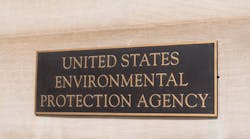Once again, the laws of motion and economics outmaneuver regulation. While fans of frantic governance harrumph about oil consumption and condemn American vehicle preferences, markets do their work-quietly, until now.
On May 5, the credit-rating agency Standard & Poor’s downgraded GM and Ford to junk status, citing several problems at the big US automakers. Prime among them: plunging sales of sport utility vehicles (SUVs). Of both companies, S&P analyst Scott Sprinzen said, “[The company’s] financial performance has been heavily dependent on the earnings of its SUVs. Recently, though, sales of its midsize and large SUVs have plummeted.” At least partly because of high gasoline prices, Sprizen said, “Industry demand for SUVs has evidently stalled.”
Discouraging sales
The market is accomplishing what lawmakers and regulators have been under pressure to do: Discourage sales of SUVs. Anyone eager for the government to speed things along should remember that it was regulation that gave the SUV market its first big push.
In 1975, responding to the Arab oil embargo of 1973-74, Congress enacted corporate average fuel economy standards for new vehicles with a miles-per-gallon ceiling lower for cars than for light trucks. The move all but eradicated the heaviest car, the station wagon. But it created a market for a new version of light truck, the minivan. Over time, in response to American fondness for large vehicles and helped by an exemption for light trucks from the “gas-guzzler tax” enacted in 1978, the minivan expanded into the SUV.
Popularity of the SUV has been impressive. According to a 2004 Environmental Protection Agency report, the truck share of the light-duty vehicle market grew steadily for 2 decades until reaching about one-half in 2002-04. “Most of this growth in the light truck market has been led by the increase in the popularity of SUVs, which now account for more than one fourth of all new light-duty vehicles,” EPA said.
While their market share rose, SUVs themselves grew. “Model-year 2004 light-duty vehicles are estimated to be heavier and more powerful than in 2003,” the EPA report said. “This continues a 20-plus-year trend of increasing vehicle weight and power due to ongoing technological innovations commercialized by vehicle manufacturers in response to consumer demands.”
The size craze contributed to the end in 1987 of a decade of rapid gains in overall light-vehicle fuel economy. After the peak, the combined average fuel efficiency of new cars and light trucks drifted downward through 1997 before steadying at the current level. Within the overall average, EPA said, the fuel economy of cars, after declining in the late 1980s, has increased by about 1 mpg since 1991, while that of trucks has changed little in the same period. For model-year 2004, EPA estimated average fuel economy for cars at 24.6 mpg, for vans at 20 mpg, for SUVs at 17.9 mpg, and for pick-up trucks at 17 mpg. Modern SUVs still outperform smaller vehicles of yesteryear. In 1975, average fuel consumption for cars was less than 15 mpg.
Apparently, gasoline prices persistently above $2/gal discourage sales of 18-mpg passenger vehicles. The EPA report projected that 2004 sales of small SUVs would fall for the fourth straight year to 229,000 units from a peak of 400,000 in 2000. It expected 2004 sales of large SUVs to rise slightly from the prior year’s level to 1.844 million units but to remain below the peak of more than 2 million in 2002. Midsize was the only SUV category EPA expected to continue growing last year-to 2.26 million units.
Best choices
The downgrade by S&P of Ford and GM credit focuses attention on this recent weakening of SUV sales and to the consequent harm to two major automakers. It doesn’t mean the end of SUVs. It does indicate that vehicle buyers have readopted fuel price as a priority factor of decision-making.
The US thus has entered some new stage in its love-hate relationship with a vehicle that manifests unintended consequences of regulation. Policymakers need to heed the lessons. Fuel consumers make the best choices about fuel consumption. Drivers make the best choices about what and how much to drive. The government will never outsmart free people working in free markets and shouldn’t try.✦
